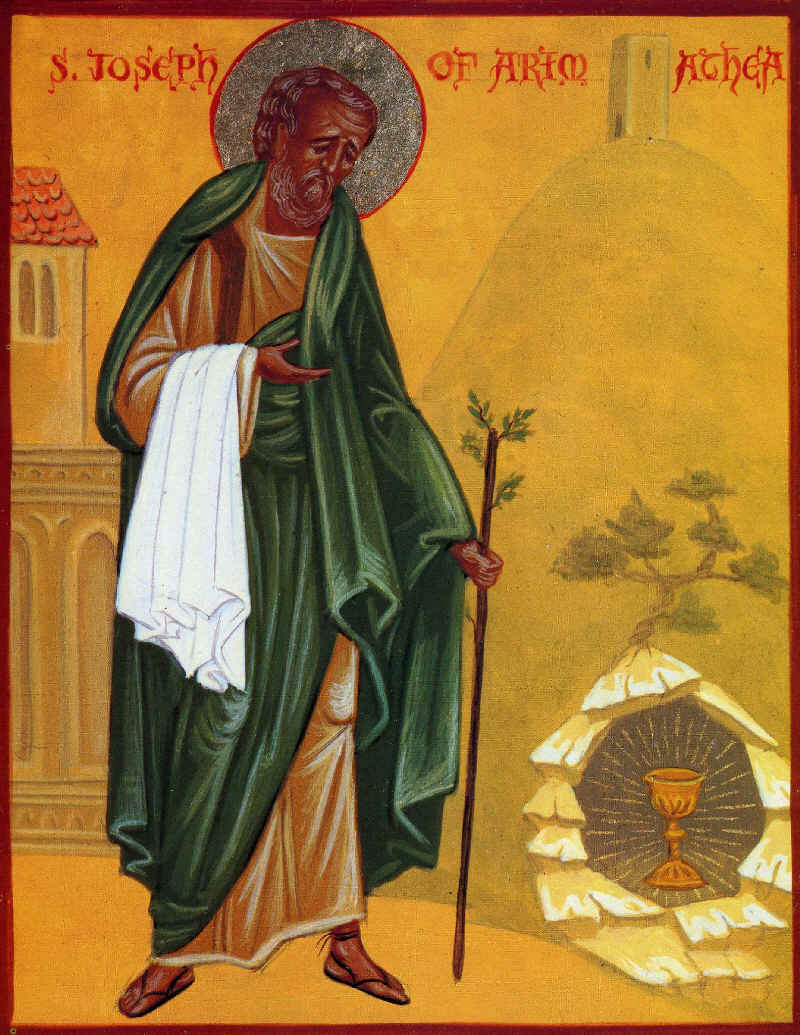One of the problems with modern culture is that good and decent stories or myths which pointed to purity of heart, sacrifice, and the ultimate union with Christ have been twisted either into action stories or games or sexual tales.
The Search or Quest for the Holy Grail is one of these numinous tales which has been ruined since the sexualization of the story in the 19th century, especially by the Pre-Raphaelites. Before the twisting of the tale, which began with the stories of St. Joseph of Arimathea bringing the Grail to Britain, the stories were a combination of both Welsh and Christian myth.
Modern commentary emphasizes the pagan or at least, pre-Christian aspects, but if St. Joseph of Arimathea was involved, and why not, then the story is as old as the earliest days of the diaspora of the Catholics after the Death of Christ, and the earliest days of evangelization.
However, and I have taught a course on the Arthurian myths and earlier ones, including the earliest from the Mabinogion and Chretien de Troyes, and for me reading that thread of texts, I had come to the conclusion that the story was about the road to perfection in the interior life.
Let me explain. In the pre-19th century interpretations of the myth of the search for the chalice or cup of Christ, those who were seeking it had to experience two spiritual events..
Selfishness, self-absorption and snesuality had to be overcome in an interior battle which was paralleled by the outer battles.
Suffering followed oaths or vows of chastity and great patience was expected of the knights involved.
A waiting on God was part of the fortitude and courage of the knights.
But, many trials were undergone for purification of the senses and imagination.
Endurance was key. Suffering led to clarity of mind and purpose and a single-mindedness. A loss of self led to the discovery of the Grail, or not, depending on personal holiness after the trials. None of the suffering made sense except as a process of purification and the teaching of endurance and patience.
All these traits were the same traits the monks were leaning in the monasteries. The lay person's quest would be the same, only is a different manner. The nobility of the lay life led to the same goals, with the same aspirations as the monk-this is clear in the writings of St. Bernard, for example, whose father and brothers were knights and who carried that same ideal of seeking perfection into Citeaux or Clairvaux.
The first difficulty was a trial of sacrifice and danger, which caused humility and increased holiness through suffering.
Now many people are familiar with this theme, which the Mozart picked up with the symbolism and ideas of Freemasonry in The Magic Flute.
The idea of men enduring trials in order to experience a purity of heart is not new. It is as old as humans are.
However, in the Grail myth, the purity included chastity and real sacrifice, including abstinence from various foods and even sleep and for the reason of finding the chalice of the Last Supper.
The trials of Gawain, for example, or Perceval or others, were endured in order to find the Chalice used at the Last Supper.
Now, later interpretations changed this, and the earliest ones did not include this aspect. But, in the most familiar renditions, the Chalice and therefore, the Eucharistic Presence of Christ, were the goals of the Quest.
Frequently, a dragon or other beast had to be fought. All of these adventures, to me, indicate a myth which is revealing the interior, spiritual battle of any man who wants to become perfect for the sake of the love of God. The struggle continues today.
The normal, sensual temptations had to be met and overthrown. Deprivation and wandering, war and battles, poverty and hatred, even the giving up of lands or titles or positions, were part of the Quest.
Like the monks in the monastery who chose to be unknown, unrecognised failures in the eyes of the world, these knights eventually discovered the emptiness and the diminished self so that God could fill them with His Presence.
God meets us in suffering, but we cannot manipulate His coming. We can only endure and more, use the virtues given to us to persevere in suffering, which on the Quest.
These stories mirror the intensity and mystery of the workings of the Holy Spirit in our quest for perfection.
Patience is also part of these stories. And the meeting with the Fisher King was considered to be a meeting with Christ, or at least a Papal figure, pointing to the homage given to the Vicar of Christ and His Church.
The artwork reveals an understanding of the need to suffer and the necessity of letting God come to us in that suffering when He so desires. He asks us to join in His suffering and then, He comes to us in a unique way.
Perhaps this analogy with the Grail Quest will help some of you understand that nothing is easy about the road to perfection, but that the goal is worthy and necessary for our union with God.







